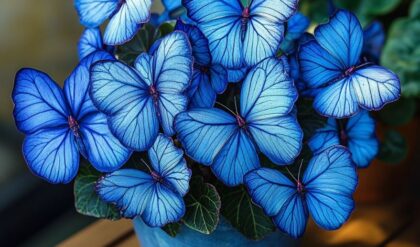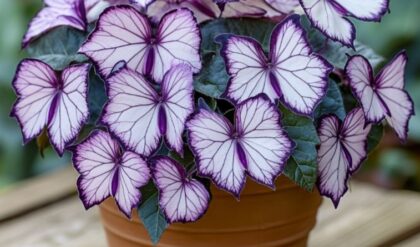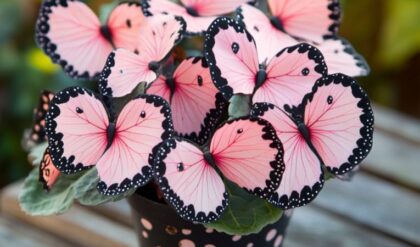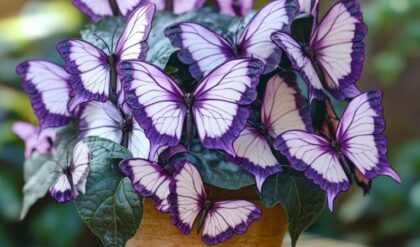The world of begonias is a captivating one, where lush foliage and vibrant blooms come together to create a botanical wonderland. As living companions, these plants offer a unique opportunity to connect with nature and nurture something truly special. Whether you’re a seasoned gardener or a novice plant enthusiast, delving into the intricacies of begonia care can be a rewarding journey filled with discoveries and personal growth.
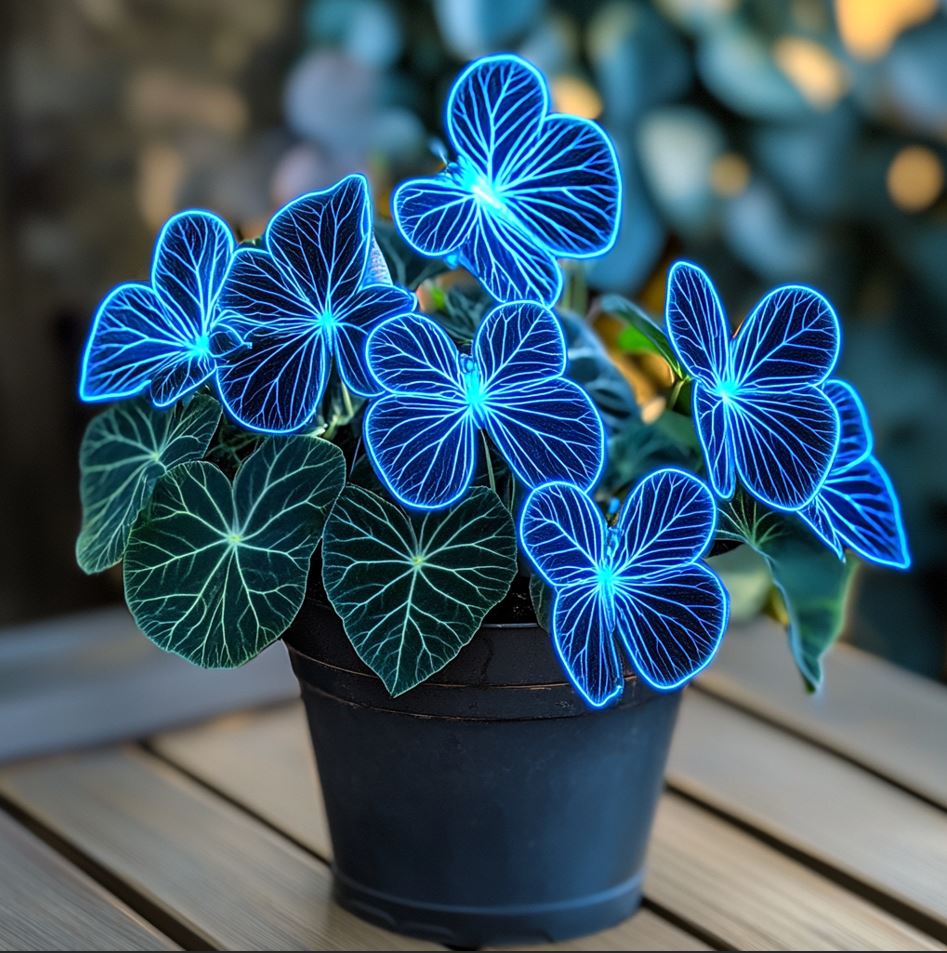
Understanding Begonia Varieties
Begonias are a diverse genus of plants, each with its own distinct characteristics and care requirements. Exploring the various types of begonias can open up a world of possibilities and inspire you to tailor your approach to their individual needs.
Common Types of Begonias
Begonias come in a wide array of shapes, sizes, and colors, each with its own unique charm. From the delicate, lace-like foliage of the angel-wing begonia to the bold, glossy leaves of the rex begonia, there’s a begonia to suit every preference and aesthetic.
One of the most popular varieties is the tuberous begonia, known for its large, showy flowers that come in a rainbow of hues. These begonias are often grown for their stunning blooms, which can create a captivating display in gardens, patios, or even indoor spaces.
Another beloved type is the fibrous begonia, characterized by its robust, succulent-like leaves and clusters of delicate flowers. These begonias are prized for their versatility, thriving in both outdoor and indoor environments.
Unique Characteristics of Each Type
Each begonia variety has its own set of distinct characteristics that make it a true standout. Some are known for their vibrant, metallic-hued leaves, while others boast intricate, patterned foliage. Certain types excel in hanging baskets, showcasing their cascading growth habit, while others prefer a more upright, compact form.
Understanding these unique traits is crucial when it comes to providing the optimal care for your begonias. By tailoring your approach to the specific needs of each variety, you can ensure that your plants thrive and reach their full potential.
Ideal Environment: The Light Dance
Begonias are delicate creatures that require a carefully choreographed balance of light to truly shine. Striking the right equilibrium between sunlight and shade is essential for their well-being and vibrant growth.
Importance of Indirect Sunlight
Begonias are native to tropical regions, where they naturally grow under the dappled light of a forest canopy. This instinctive preference for indirect sunlight is deeply ingrained in their DNA, and it’s crucial to mimic this environment in your own growing space.
Direct sunlight, particularly during the hottest hours of the day, can be detrimental to begonias, causing their leaves to scorch and their blooms to wilt. Instead, these plants thrive in conditions that provide a gentle, filtered light, allowing them to bask in the warmth without being overwhelmed by harsh rays.
Suitable Window Placement
Strategically positioning your begonias near a window can be a game-changer in their care. North or east-facing windows often provide the ideal light conditions, as they offer a consistent, indirect exposure that closely resembles the natural habitat of these plants.
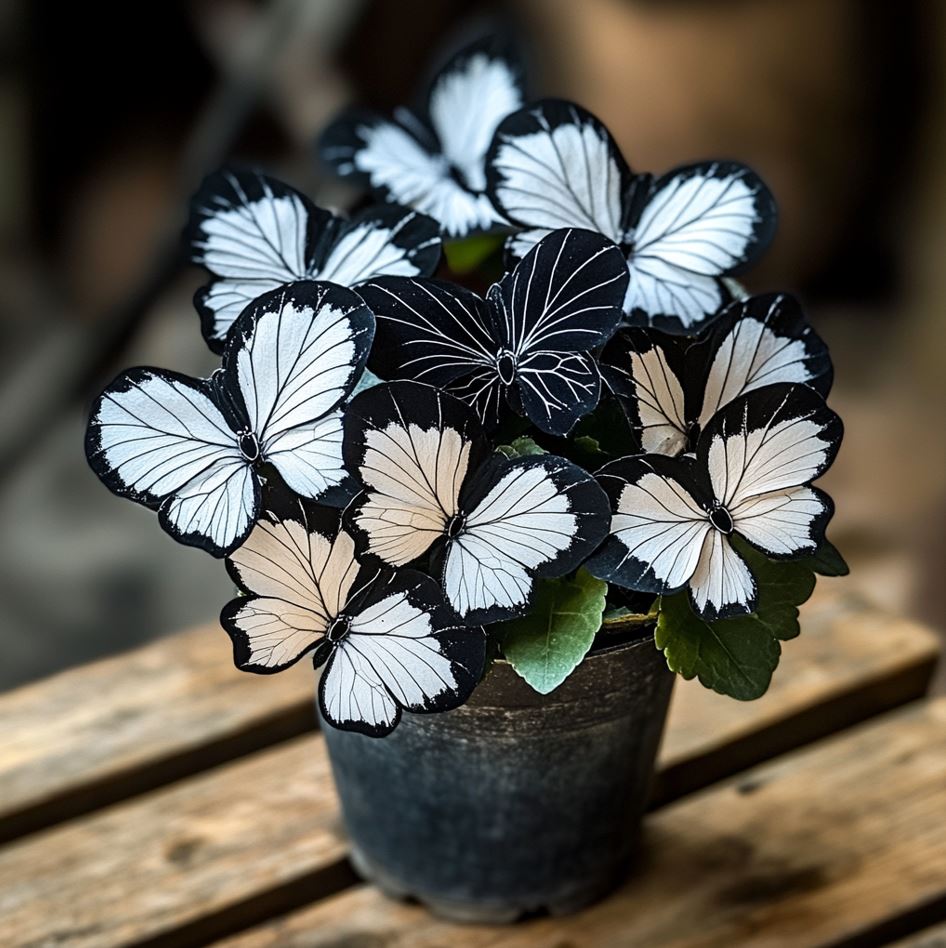
Avoid placing your begonias in direct west-facing or south-facing windows, as the intense midday sun can quickly become too much for them to handle. If you must situate them in these locations, consider using a sheer curtain or blinds to diffuse the light, creating a more welcoming environment for your green companions.
Paying attention to the dance of light and shadow within your growing space is an essential aspect of begonia care. By providing the right balance, you’ll be rewarded with lush, vibrant foliage and a stunning display of blooms.
Watering Wisely: A Thirsty Companion
Watering is a critical component of begonia care, and understanding the delicate balance between too much and too little can make all the difference in the health and longevity of your plants.
Signs of Overwatering
Begonias are notoriously sensitive to water, and overwatering can quickly become their downfall. The telltale signs of overwatering include yellowing or wilting leaves, mushy or rotting stems, and a general air of distress.
It’s important to remember that begonias, unlike some hardy houseplants, cannot withstand extended periods of standing water. This can lead to root rot, a condition that can quickly spiral into a life-threatening situation for your beloved begonia.
Techniques for Effective Watering
To keep your begonias thriving, aim to maintain consistently moist, but not saturated, soil. A good rule of thumb is to water when the top inch of the soil feels dry to the touch. This allows the roots to access the necessary moisture while preventing the soil from becoming waterlogged.
When watering, be sure to focus on the soil, avoiding getting water directly on the leaves and flowers. This can help prevent the development of fungal diseases and maintain the overall health of your plant.
It’s also crucial to use lukewarm water, as cold water can shock the delicate roots and stunt the growth of your begonia. By staying mindful of your watering habits, you’ll be well on your way to fostering a strong, resilient plant.
Remember, caring for your begonia is akin to nurturing a friendship – it requires a delicate balance of attention and respect. By understanding its unique watering needs, you’ll be able to build a deep, lasting connection with your green companion.
Nutritional Needs: Feeding Your Green Friends
Just as we humans require a balanced diet to thrive, begonias too need a steady supply of essential nutrients to reach their full potential. Providing them with the right soil mix and a thoughtful fertilization schedule can make all the difference in their growth and vitality.
Choosing the Right Soil Mix
Begonias are happiest in well-draining, nutrient-rich soil that mimics the conditions of their natural habitat. Look for potting mixes specifically formulated for indoor plants, as these are typically lighter in texture and more suitable for container-grown begonias.
Alternatively, you can create your own custom blend by mixing peat moss, perlite, and compost. This combination not only ensures excellent drainage but also provides the necessary nutrients for your begonia to thrive.
Fertilization Schedule and Tips
Begonias are considered moderate to heavy feeders, meaning they require regular fertilization to sustain their lush foliage and vibrant blooms. Aim to apply a balanced, water-soluble fertilizer every two to four weeks during the growing season, following the manufacturer’s instructions carefully.
When it comes to fertilizing, less is often more. Overfertilizing can lead to rapid, leggy growth and even damage the plant’s delicate root system. Instead, opt for a gentle, consistent approach, allowing your begonia to gradually absorb the nutrients it needs.
By providing your begonia with the right soil and a thoughtful feeding regimen, you’re essentially setting the stage for a thriving, beautiful plant. It’s akin to preparing a nourishing feast for a cherished friend – the right ingredients make all the difference.
Temperature and Humidity: The Comfort Zone
Like us, begonias have a preference for a specific range of environmental conditions that allow them to truly flourish. Striking the right balance between temperature and humidity is crucial for their well-being.
Optimal Temperature Range
Begonias thrive in temperatures between 65°F and 75°F (18°C – 24°C). This temperate zone closely mirrors their natural habitat and provides the ideal conditions for their growth and development.
Exposing your begonias to temperatures outside of this range can be detrimental. Cooler temperatures can cause the leaves to wilt and the flowers to drop, while excessive heat can lead to scorched foliage and stunted growth.
Creating Humidity with Pebble Trays
In addition to the optimal temperature, begonias also require higher humidity levels to truly excel. These plants hail from tropical regions, where the air is naturally more humid, and they need a similar environment to truly thrive.
One effective way to increase the humidity around your begonias is by using a pebble tray. Simply fill a shallow tray with pebbles and water, then place your potted begonia on top. As the water evaporates, it will create a localized humid microclimate, providing your plant with the moisture it craves.
Grouping your begonias together can also help to create a more humid environment, as the plants will naturally transpire and contribute to the overall humidity levels.
By creating a comfortable, balanced atmosphere for your begonias, you’re essentially providing them with a spa-like retreat – a space where they can unfurl their leaves, open their blooms, and thrive to their fullest potential.
Repotting Your Begonia
As your begonia grows and matures, it may require periodic repotting to ensure it has the necessary space and resources to continue thriving. Knowing when and how to transplant your plant can make all the difference in its long-term health and vigor.
When to Repot
Begonias are generally considered fast-growing plants, and they can quickly outgrow their original containers. As a general rule, it’s recommended to repot your begonia every one to two years, or when you notice the roots beginning to emerge from the drainage holes.
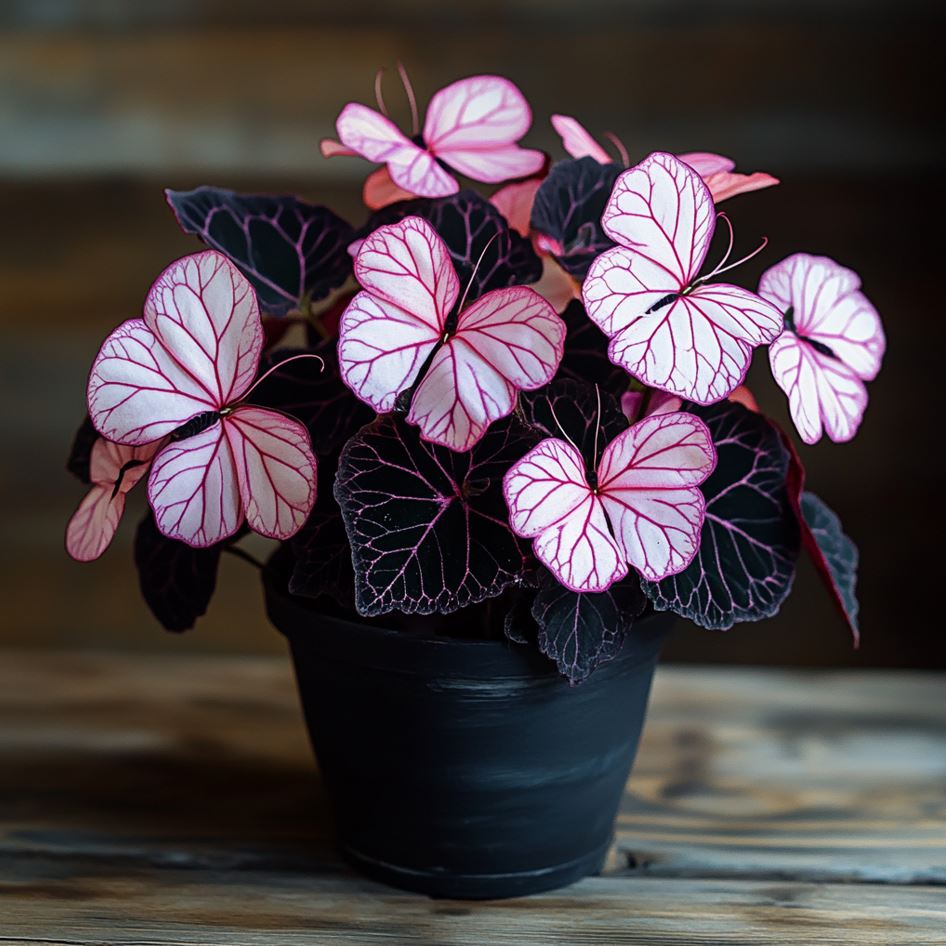
Pay close attention to the growth rate of your specific variety, as some may require more frequent repotting than others. Staying proactive and giving your begonia the room it needs to spread its roots can prevent issues like stunted growth or root rot.
Step-by-Step Repotting Process
When it’s time to transplant your begonia, approach the task with care and consideration. Start by gently removing the plant from its current pot, being mindful not to damage the delicate root system. Carefully inspect the roots, trimming away any that are damaged or dead.
Next, select a new pot that is only slightly larger than the previous one, as begonias prefer to be snug in their containers. Fill the bottom of the new pot with a fresh, well-draining potting mix, then gently place your begonia in the center, taking care not to bury the crown.
Gradually add more soil around the plant, taking care to avoid compacting it too tightly. Water the soil thoroughly, and be sure to keep your begonia in a shaded area for a few days to allow it to acclimate to its new environment.
By providing your begonia with the right-sized home and the proper repotting techniques, you’re giving it the best possible chance to thrive and reach new heights of beauty and vitality.
Pest Management: A Watchful Eye
While begonias are generally resilient plants, they can still fall victim to the unwelcome attention of pests. Staying vigilant and addressing any issues promptly can help ensure the long-term health and well-being of your green companions.
Common Pests Affecting Begonias
Begonias can be susceptible to a variety of pests, including aphids, spider mites, and mealybugs. These tiny invaders can wreak havoc on the delicate foliage and disrupt the overall growth and vigor of your plants.
Keeping a close eye on your begonias, and inspecting them regularly, can help you catch any pest infestations early on, before they have a chance to escalate into a serious problem.
Organic Pest Control Solutions
When it comes to addressing pests on your begonias, it’s best to opt for gentle, organic solutions that minimize the impact on the plant and the surrounding environment.
One effective approach is to use a simple mixture of water and mild liquid soap, gently spraying the affected areas to dislodge and remove the pests. You can also try introducing natural predators, such as ladybugs or lacewings, to help keep the pest population in check.
For more stubborn infestations, consider using a neem oil-based insecticidal spray, which is derived from the neem tree and is gentle yet highly effective against a wide range of pests.
Maintaining a vigilant, proactive approach to pest management, much like keeping a watchful eye on a dear friend, can go a long way in ensuring the long-term health and well-being of your begonias.
Troubleshooting Common Issues
Even with the best care, begonias can occasionally experience challenges that require your attention and problem-solving skills. Understanding the potential issues and how to address them can help you keep your green companions thriving.
Leaf Drop and Yellowing
One common issue that begonia owners may encounter is leaf drop or yellowing. This can be caused by a variety of factors, including overwatering, underwatering, or exposure to too much direct sunlight.
If you notice your begonia’s leaves turning yellow and dropping off, try adjusting your watering routine and ensuring the plant is receiving the appropriate amount of light. Avoid allowing the soil to become completely dry, as this can also contribute to leaf loss.
Addressing Stunted Growth
If your begonia seems to be growing slowly or not reaching its full potential, there could be several underlying causes. Inadequate nutrition, poor soil conditions, or even pests can all play a role in stunting the plant’s growth.
To address this issue, start by evaluating the soil mix and considering whether it’s time to repot your begonia into a fresh, nutrient-rich medium. You may also want to review your fertilization schedule and make any necessary adjustments to provide your plant with the nourishment it needs.
Remember, every begonia is unique, and the key to resolving any challenges is to approach them with patience, observation, and a willingness to experiment. By troubleshooting issues and applying targeted solutions, you can help your begonia thrive and reach its full, vibrant potential.
Propagation Techniques for Begonias
One of the joys of growing begonias is the opportunity to propagate them, allowing you to create new plants and share the beauty of these wondrous species with others. Mastering the art of begonia propagation can be a deeply rewarding experience.
Leaf Cuttings Method
One of the most common and successful propagation techniques for begonias is the leaf cutting method. This involves carefully selecting a healthy leaf, cutting it into sections, and encouraging the growth of new plantlets.
To start, choose a mature, undamaged leaf and use a sharp, sterilized knife or scissors to cut it into sections, ensuring that each segment includes a portion of the leaf stem. Next, place the leaf cuttings in a well-draining potting mix, misting them regularly to maintain moisture.
With patience and the right conditions, the leaf cuttings will begin to develop new roots and tiny plantlets, allowing you to transplant them into their own individual containers once they’ve established a strong root system.
Division of Root Ball
Another effective propagation method for begonias is the division of the root ball. This approach works particularly well for plants that have become overgrown or rootbound in their containers.
Carefully remove the begonia from its pot and gently tease apart the root system, ensuring each division has a healthy portion of the root ball and some foliage. Replant the divisions in separate containers, providing them with the same care and attention as you would for a new begonia.
The joy of propagation lies not only in the satisfaction of creating new plants but also in the opportunity to share your love of begonias with others. Whether you’re gifting cuttings to friends or nurturing new generations of your own beloved plants, the act of propagation is a testament to the enduring connection between gardeners and their green companions.
Seasonal Care Considerations
Begonias are resilient plants that can thrive in a variety of environments, but their care needs may shift throughout the changing seasons. Adapting your approach to their seasonal requirements can help ensure their continued health and vitality.
Adapting Care for Different Seasons
During the active growing season, typically spring and summer, begonias will require more frequent watering and a steady supply of nutrients to support their lush foliage and abundant blooms. Ensure that the soil remains consistently moist, and consider fertilizing your plants every two to four weeks.
As the days grow shorter and the temperatures begin to cool in the fall, begonias will naturally start to enter a period of dormancy. This is the time to scale back on watering and fertilization, allowing the plants to slowly transition into a resting state.
During the winter months, when begonias are typically dormant, it’s important to provide them with the appropriate care to prevent stress and ensure a strong, healthy comeback in the following season. Reduce watering to the bare minimum, and consider moving your plants to a cooler, brighter location to mimic their natural environment.
Preparing for Winter Dormancy
As your begonias approach the winter months, it’s essential to prepare them for the coming dormancy period. This may involve gradually reducing watering, cutting back any dead or dying foliage, and potentially moving the plants to a location with slightly cooler temperatures.
By understanding the seasonal needs of your begonias and making the necessary adjustments to their care, you’ll be able to foster a strong, resilient plant that will reward you with stunning displays of foliage and blooms year after year.
Begonias in Outdoor Settings
While begonias are often associated with indoor cultivation, these versatile plants can also thrive in outdoor environments, adding a touch of tropical elegance to gardensand landscapes. Understanding how to care for begonias in outdoor settings can elevate your gardening experience and enhance the aesthetic of your outdoor space.
Choosing the Right Location
When planting begonias outdoors, selecting an appropriate location is crucial for their success. Begonias thrive in partial shade to full shade, making them ideal for areas that receive filtered sunlight or dappled light throughout the day. Avoid locations with harsh, direct sunlight, as this can scorch the leaves and diminish their vibrant colors.
In addition to light conditions, consider the soil quality and drainage of the chosen site. Begonias prefer rich, well-draining soil, so it may be beneficial to amend existing garden soil with organic matter such as compost or peat moss to improve its structure and fertility. Conducting a simple test for drainage can save you from potential issues down the line; if water pools around the roots, it could lead to root rot.
Seasonal Protection and Care
As seasons change, so too do the needs of your outdoor begonias. During the warmer months, you’ll want to monitor moisture levels closely, particularly if there are prolonged periods of heat or drought. Regular watering is essential, but always ensure the soil dries out slightly between watering sessions to prevent overwatering.
As autumn approaches and temperatures begin to drop, consider preparing your begonias for potential frost. If you live in an area prone to chilly nights, it’s wise to cover your plants with fabric or move potted begonias indoors until the risk of frost has passed. Additionally, during the fall season, prune back any dead foliage and prepare the beds for winter by adding mulch to help insulate the roots against cold temperatures.
Cultivating begonias outdoors can be a fulfilling endeavor. The sight of their luscious foliage swaying in the breeze or their colorful blooms brightening up a shaded corner of your garden can bring immense joy. Moreover, gardening outdoors fosters a deeper connection with nature and creates an inviting atmosphere for relaxation and reflection.
Benefits of Growing Begonias
Beyond their striking appearance, growing begonias offers numerous benefits that can positively impact your life and environment. Their unique foliage and vibrant blooms can transform any space while contributing to overall well-being.
Aesthetic Appeal
Begonias come in a plethora of varieties, each with distinct leaf shapes, colors, and blooming patterns. This diversity allows gardeners to create stunning visual displays, whether they’re arranging them in pots on a patio, planting them in garden beds, or using them as part of floral arrangements indoors.
The lush, tropical foliage of begonias adds depth and texture to any landscape, making them an excellent choice for gardeners seeking to incorporate more greenery into their surroundings. For those who appreciate artistry in nature, the ability to mix and match different types of begonias creates endless possibilities for showcasing creativity and personal style.
Psychological Benefits of Gardening
Engaging in gardening activities, including caring for begonias, can provide significant psychological benefits. Numerous studies have demonstrated the therapeutic effects of nurturing plants, which can reduce stress, anxiety, and feelings of isolation. The act of tending to your begonias—whether through watering, pruning, or simply admiring their beauty—can offer a sense of accomplishment and fulfillment.
Additionally, gardening encourages mindfulness by promoting an awareness of the present moment. As you immerse yourself in the task of caring for your begonias, you become attuned to their growth cycle, seasonal changes, and the beauty of nature surrounding you. This connection fosters a calm mind and provides an escape from the hustle and bustle of everyday life.
Moreover, sharing your passion for begonias with friends and family, whether through gifting cuttings or inviting them to admire your garden, can strengthen relationships and foster a sense of community. Growing begonias is not just about the plants themselves but also about the shared experiences and memories they create.
Conclusion
Caring for begonias is a journey that invites exploration, creativity, and connection with nature. By understanding the unique characteristics of various begonia species, providing them with the ideal environment, and addressing common challenges, you can cultivate thriving plants that signal vibrancy and vitality. Whether grown indoors or outdoors, begonias will enrich your life with their beauty and grace.
As you navigate the nuances of begonia care, remember that patience is key. Each plant is a living organism with its own needs and quirks, and building a relationship with your begonias can be as rewarding as witnessing their growth. Embrace the process, celebrate small victories, and enjoy the captivating beauty these remarkable companions bring into your life. With dedication and love, your begonias will flourish, offering a delightful journey into the world of foliage and bloom.

